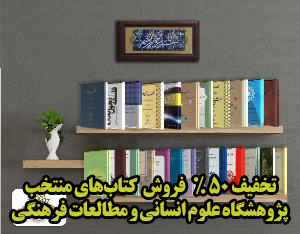گفتمان هندسه قدرت در معماری ناجای آینده
آرشیو
چکیده
هدف نوشتار پیش رو تبیین گفتمان هندسه قدرت در معماری ناجای آینده در پاسخ به این پرسش است که نقطه کانونی گفتمان هندسه قدرت در معماری ناجای آینده چیست؟ فرضیه خود را بر این قرار داده که نقطه کانونی گفتمان هندسه قدرت در معماری ناجای آینده مشروعیت بخشی به اقدامات و وظایف محوله است که بار معنایی امنیت سازی را به عنوان دال مرکزی در نظر، باتوجه به سه محور مدیریت جهادی، سرمایه اجتماعی و قانون مداری و در عمل، با همراه ساختن دیگر دال ها شامل اعتمادسازی، معنویت سازی و رفتارسازی، زنجیره هم ارزی گفتمان ناجا را در معماری آینده این نیرو ترسیم می کند. روش مقاله توصیفی-تحلیلی و نوع آن بنیادی-کاربردی است. روش گردآوری اطلاعات با تمرکز بر شیوه سندکاوی و با بررسی متون موجود انجام می شود. نتایج حاصل از بررسی حاکی از آن است که گفتمان سازی و معرفی جنبه های مختلف معماری ناجای آینده نیازمند ساخت منظومه فکری ِمناسب با تمرکز بر ایمان، عدالت و ولایت مداری به عنوان عناصر مشروعیت ساز از طریق توجه به شرایط گذشته (آنچه بود)، بررسی شرایط فعلی (آنچه هست) و تلاش برای قرارگرفتن در وضعیت مطلوب (آنچه باید باشد) به دست خواهد آمد. وضعیت مطلوب، زمانی است که نقش ناجا را در ترسیم نظام معنایی هندسه قدرت در بین کنشگران امنیت ساز با همراه کردن دال های اعتمادسازی، معنویت سازی و رفتار سازی برجسته خواهد کرد.Discourse of Power Geometry in the Architecture of Future NAJA
This paper intends to explain the discourse of the power geometry in the architecture of future NAJA. It also answers the question “what is the focal point of the discourse of power geometry in the architecture of future NAJA?” The hypothesis is that the focal point is the legitimization of NAJA’s actions and responsibilities. It outlines the meaning of security providing as the central signifier in theory. It also outlines the chain of equivalence of the discourse of NAJA in the future architecture of this force, according to three principles of Jihadi Management, Social Capital, and the Rule of Law, practically by summoning other signifiers including confidence-building, spiritualization, and creation behavior. The paper is a fundamental and practical study. It uses a descriptive-analytical method. The data collection was done through a documentary research as well as the analysis of the existing texts. The findings suggest that discursive formation and the introduction of various dimensions of the architecture of future NAJA require the development of an appropriate intellectual system. The system must rely on faith, justice, and the Guardianship of the Islamic Jurist as the legitimizing factors in studying the previous situations (what it used to be), the current situation (what it is), and the desirable situation (what it should be). All this highlights the role of NAJA in the illustration of the semantic system of the power geometry among security providers through summoning signifiers like confidence-building, spiritualization, and creating behavior.




